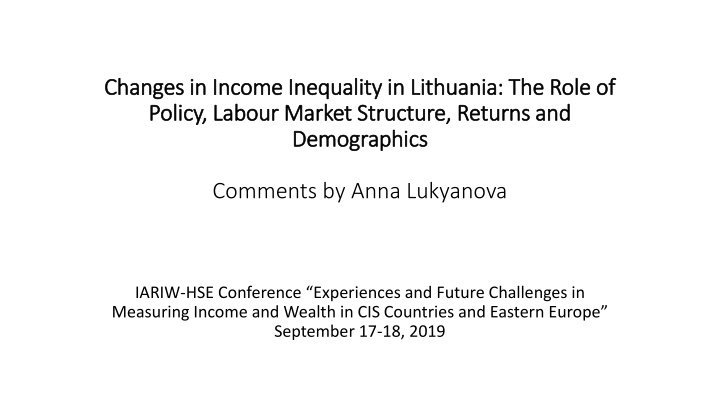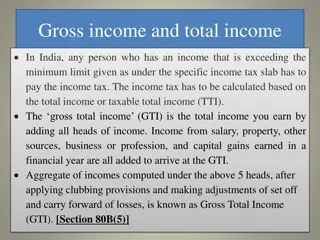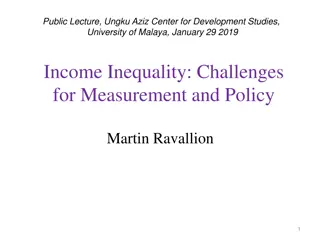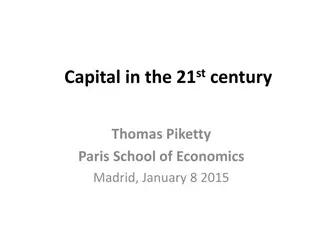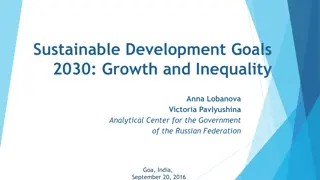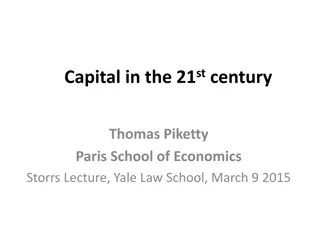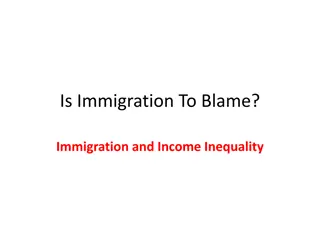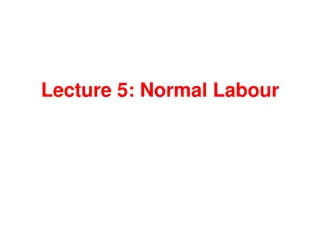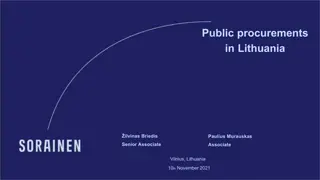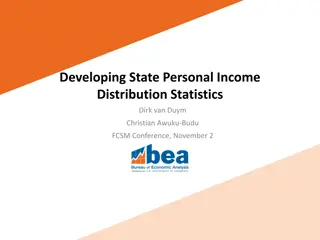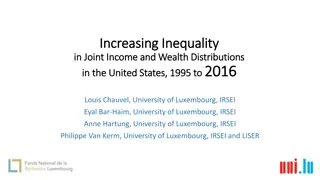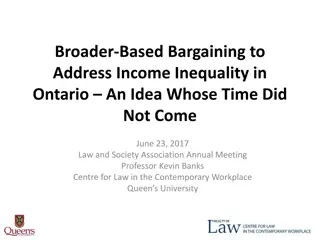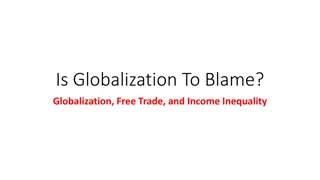Changes in Income Inequality in Lithuania: Role of Policy, Labour Market Structure, and Demographics
Examining income distribution drivers in Lithuania from 2007-2015, focusing on market income vs. disposable income dynamics, with a spotlight on policy, labor market structure, returns, and demographic shifts.
Download Presentation

Please find below an Image/Link to download the presentation.
The content on the website is provided AS IS for your information and personal use only. It may not be sold, licensed, or shared on other websites without obtaining consent from the author.If you encounter any issues during the download, it is possible that the publisher has removed the file from their server.
You are allowed to download the files provided on this website for personal or commercial use, subject to the condition that they are used lawfully. All files are the property of their respective owners.
The content on the website is provided AS IS for your information and personal use only. It may not be sold, licensed, or shared on other websites without obtaining consent from the author.
E N D
Presentation Transcript
Changes in Income Inequality in Lithuania: The Role of Changes in Income Inequality in Lithuania: The Role of Policy, Policy, Labour Labour Market Structure, Returns and Market Structure, Returns and Demographics Demographics Comments by Anna Lukyanova IARIW-HSE Conference Experiences and Future Challenges in Measuring Income and Wealth in CIS Countries and Eastern Europe September 17-18, 2019
The main message of the paper The paper aims to give a comprehensive picture of income distribution and its drivers via detailed decomposition of income sources and structural factors Lithuania is chosen as one of the most unequal EU countries. Small and open economy. Sensitive to external shocks. Period under study: 2007-2015 (global crisis + recovery) Findings: Most of increase in market income inequality happened in 2007-2011 and demographics (age, education) is the major contributor to this increase The tax and benefit system managed to counter the increase inequality in 2007-2011 Most of increase in disposable income inequality happened in 2011-2015 and returns is the major contributor to this increase Much of overall increase in market income inequality remains unexplained
The contribution of the paper The contribution is not in methodology but it applies the method originally developed for cross-country comparisons to changes over time The method allows for decomposition of changes in the disposable income distribution: (i) labor market structure; (ii) returns; (iii) demographic composition; and (iv) tax-benefit system. The paper highlights the role played by tax and benefits system in combatting the rise of inequality during the major economic shocks
The method of the paper Detailed decomposition + combining of econometric estimations with micro-simulations via EUROMOD In constructing counterfactuals the methodology follows the logic of Oaxaca-Blinder decomposition swapping coefficients in econometric models and parameters in simulations between the years. Potential problems: Estimation errors: The sample size is relatively small while estimations are done for even smaller population subgroups (e.g. for participation equations men, single women, women in couples). The estimated coefficients are then used in higher-level estimations and for counterfactuals Standard errors would be desirable for the estimates of changes in incomes and inequality as well as in the decomposition
Questions and suggestions - 1 Changes in the hh size seem not to show up in counterfactuals and thus are not reflected in the Demography explanation. In fact the hh size is used a parameter in the model to calculate a per adult equivalent income. Descriptive stats (a sharp decline in the share of married individuals) point at potentially big decrease in the hh size. Ageing seems to the major factor under Demography component as the share of those with tertiary education was constantly growing over the whole period but demography has the large contribution only in 2007-2011. Right? I was surprised to see that sizable lowering of income taxes in 2011-2015 had no effect on inequality
Questions and suggestions - 2 Emigration numbers (Eurostat) Unemployment rate The Labor market structure played equalizing role which seems counterintuitive given huge fluctuations in the unemployment rate and clear polarization of the occupational structure BUT There is a clear correlation between emigration ( Demography ) and unemployment ( Labor market structure ). As the method is based on correlations does it allow to differentiate between the two?
Questions and suggestions - 3 Descriptive stats reveal a substantial increase in the share of capital income recipients. Can the Returns component be decomposed into capital and earnings returns? If migration is important what is the role of remittances? The model is comprehensive, but the unexplained component is large. What was left? Other measures of inequality would be informative as inequality increased mostly between the tails of the distribution (Gini is not esp. sensitive to changes in the tails)
